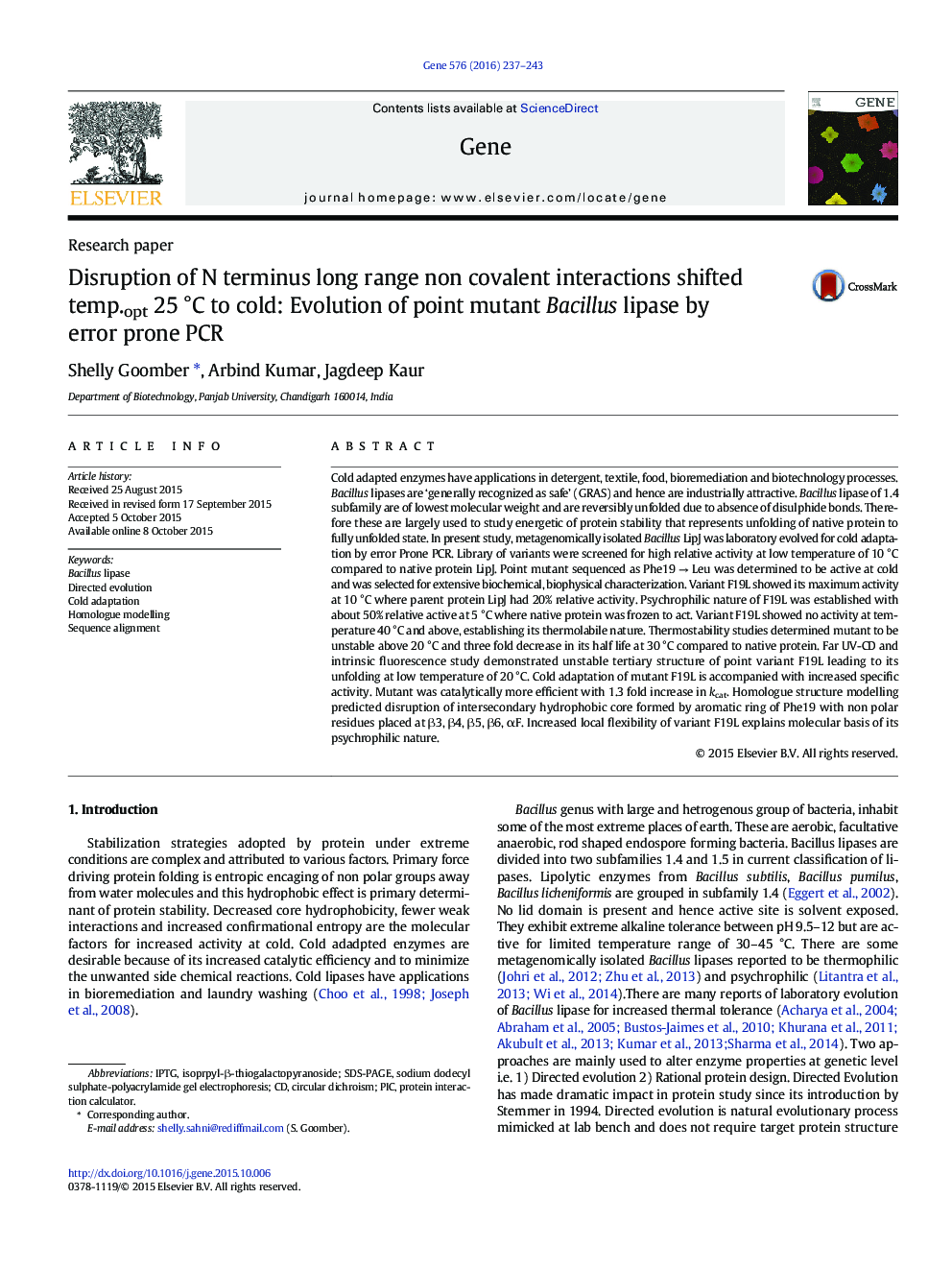| کد مقاله | کد نشریه | سال انتشار | مقاله انگلیسی | نسخه تمام متن |
|---|---|---|---|---|
| 2815254 | 1159862 | 2016 | 7 صفحه PDF | دانلود رایگان |

• Bacillus lipase was randomly mutated by error prone PCR and point mutant Phe19-Leu was selected for high activity at cold.
• Mutant showed shifting of temperature optima (Temp.opt = 10 °C) to cold relative to native protein LipJ with highest activity at 37 °C.
• Circhular dichroism and fluorescence spectra confirmed unfolding of secondary and tertiary structure of mutant F19L at lower temperature.
• Homologue modelling studies speculated the disruption of long range interactions at region where N and C terminals are in close proximity, as the molecular basis of increased activity at cold.
Cold adapted enzymes have applications in detergent, textile, food, bioremediation and biotechnology processes. Bacillus lipases are ‘generally recognized as safe’ (GRAS) and hence are industrially attractive. Bacillus lipase of 1.4 subfamily are of lowest molecular weight and are reversibly unfolded due to absence of disulphide bonds. Therefore these are largely used to study energetic of protein stability that represents unfolding of native protein to fully unfolded state. In present study, metagenomically isolated Bacillus LipJ was laboratory evolved for cold adaptation by error Prone PCR. Library of variants were screened for high relative activity at low temperature of 10 °C compared to native protein LipJ. Point mutant sequenced as Phe19 → Leu was determined to be active at cold and was selected for extensive biochemical, biophysical characterization. Variant F19L showed its maximum activity at 10 °C where parent protein LipJ had 20% relative activity. Psychrophilic nature of F19L was established with about 50% relative active at 5 °C where native protein was frozen to act. Variant F19L showed no activity at temperature 40 °C and above, establishing its thermolabile nature. Thermostability studies determined mutant to be unstable above 20 °C and three fold decrease in its half life at 30 °C compared to native protein. Far UV-CD and intrinsic fluorescence study demonstrated unstable tertiary structure of point variant F19L leading to its unfolding at low temperature of 20 °C. Cold adaptation of mutant F19L is accompanied with increased specific activity. Mutant was catalytically more efficient with 1.3 fold increase in kcat. Homologue structure modelling predicted disruption of intersecondary hydrophobic core formed by aromatic ring of Phe19 with non polar residues placed at β3, β4, β5, β6, αF. Increased local flexibility of variant F19L explains molecular basis of its psychrophilic nature.
Journal: Gene - Volume 576, Issue 1, Part 2, 15 January 2016, Pages 237–243